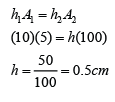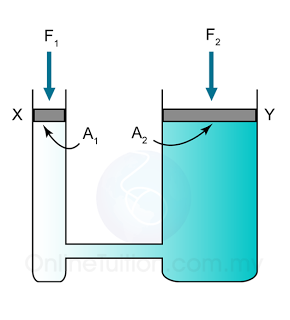
- A hydraulic system applies Pascal's principle in its working mechanism. It can be used as a force multiplier.
- In this hydraulic system, a small force, Fl is applied to the small piston X results in a large force, F2 at the large piston Y. The pressure, due to the force, F1, is transmitted by the liquid to the large piston.
- According to Pascal’s principle,
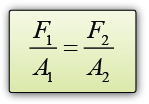
Change of Oil Level in a Hydraulic System
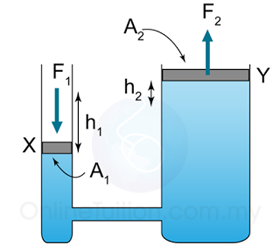
In the diagram to the left, when piston-X is pressed down, piston-Y will be push up. The change of the piston levels of the 2 pistons is given by the following equation:

In a hydraulic system the large piston has a cross-sectional area A2 = 200 cm² and the small piston has cross-sectional area A1 = 5 cm². If a force of 250 N is applied to the small piston, what is
a. the pressure exerted on the small piston
b. the force F, produced on the large piston?
Answer:
a. Pressure exerted on the small piston

b. Pressure exerted on the large piston = Pressure exerted on the small piston
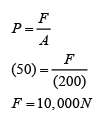
A hydraulic lift is to be used to lift a truck masses 5000 kg. If the diameter of the small piston and large piston of the lift is 5cm and 1 m respectively,
a. what gauge pressure in Pa must be applied to the oil?b. What is the magnitude of the force required on the small piston to lift the truck?
Answer:
a. Weight of the truck,
W = mg
W = (5000)(10) = 50,000N
Area of the big piston

Pressure of the oil

b.
Area of the small piston

According to the Pascal's Principle,
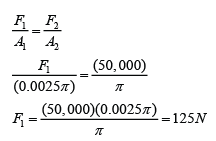
Example 3:
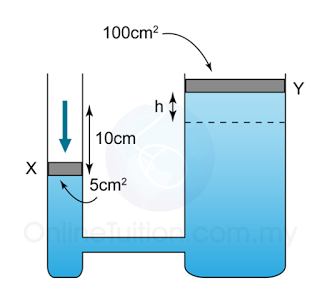
Figure above shows a hydraulic system. The area of surface X is 5 cm² and the area of surface Y is 100 cm². Piston X has been pushed down 10cm. what is the change of liquid level, h, at Piston Y?
Answer:
Distance move by the piston-X, h1 = 10cm
Distance move by the piston-Y, h2 = h
Area of piston-X, A1 = 5 cm²
Area of Piston-Y, A2 = 100 cm²
